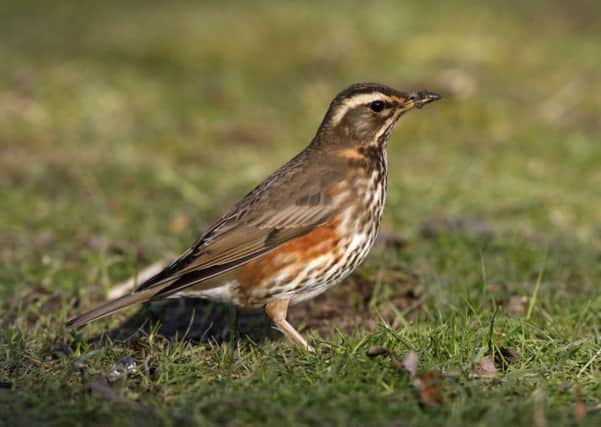Country Diary: Well-stocked food supplies at mere site


Our visit to Seamer Road Mere was rewarded when we immediately sighted a good variety of bird life frantically devouring the variety of food displayed alongside the car park near the far end of Mere Lane.
Thanks to the kind folk who had contributed to our supplies, all were well, including nuthatch, long-tailed tits, unlike typical tits, are mainly insectivorous throughout the year, yet here were five, ravenously pecking at the fat balls.
Advertisement
Hide AdAdvertisement
Hide AdGreat tits and blue tits were well-matched competitiors for food. The blue tits, although the smaller species, were not bullied into submission by the great tits.
The great spotted woodpecker eventually appeared – its diet varying considerably during the course of the year. In summer they probe the fissures in the bark of trees for insects and invertebrates.
In autumn and winter they hammer into dead timber, and also harvest seeds and cones. Nearby conifers provide them with seed, but they also visited the net of fat balls.
Robins were very much in evidence – highly strung and hot-tempered. Being one of Europe’s most territorial birds, their orange-red breast is a permanent signal to other birds to keep their distance. Intruders are asking for trouble, and battles can be violent. The robin will ‘perch and pounce’, sitting still on the low fence near the ground, and then pounce if a worm or insect emerges. It needs silence and privacy, so rivals – keep away.
Advertisement
Hide AdAdvertisement
Hide AdMore blackbirds are now attracted to this site, and were joined by a solitary dunnock, that has for many years been called a hedge sparrow. Actually it isn’t related to the sparrow at all. It’s a song bird belonging to the accentor family. They hop wherever there is low scrub cover, or shuffle across flower beds searching for insects.
When the ground was hard-packed with snow and ice, a car had laft a track in softer ground. To our delight was a small flock of blackbirds and redwings at close quarters. During hard winters the redwing feeds in gardens too with other thrushes.
Hawthorn berries are a favourite food, along with yew, holly and mountain ash. However, when these are unavailable, invertebrates like worms, snails and spiders are sought. The redwings we observed were energetic in their quest for invertebrates.
Flinging leaves and debris from the deep rut, they discovered their objective – food!
Advertisement
Hide AdAdvertisement
Hide AdRedwings are slightly smaller and darker than song thrushes. Look for their tawny-red underwing, just visible on the flank of a standing bird. There’s a prominent pale stripe above the eye too.
Keep feeding your feathered friends, and please ensure ice-free water!